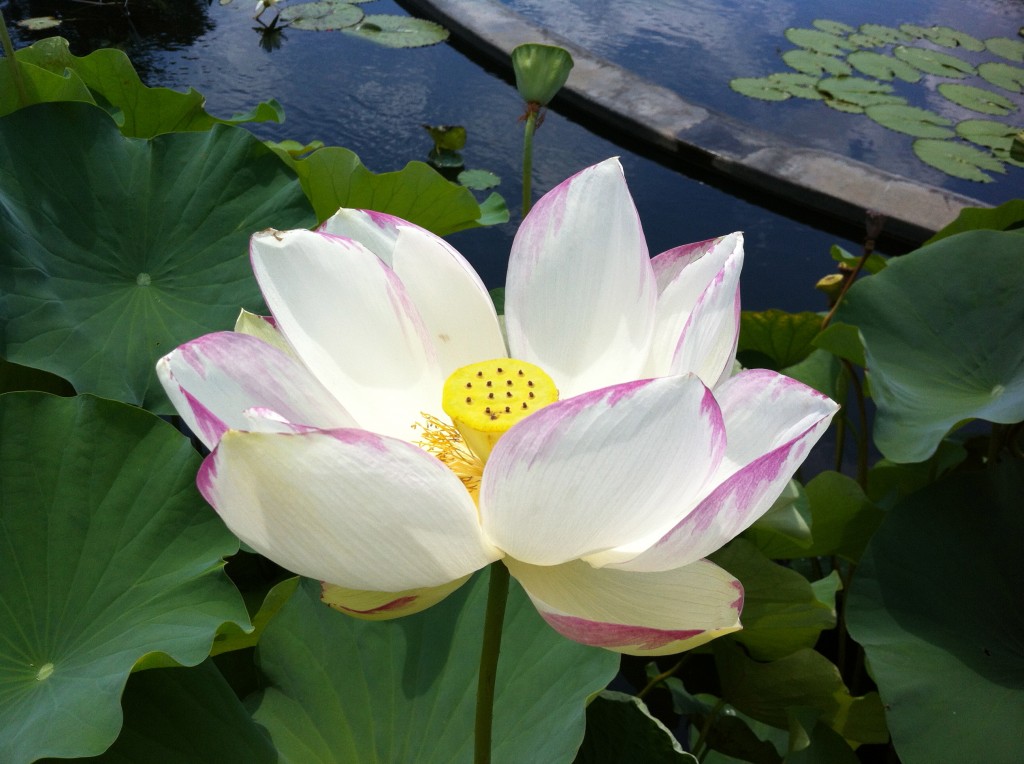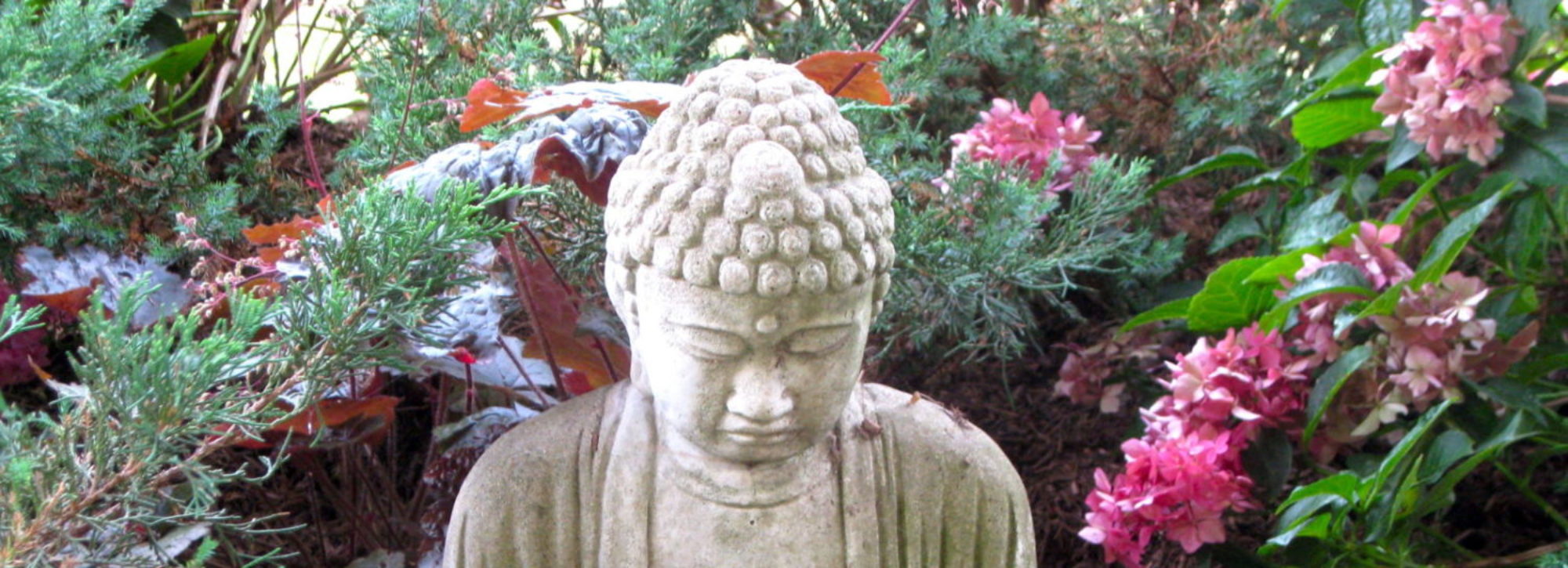 There’s something strange about Zen’s 10th Grave Precept — the one against ”defaming the Three Treasures” of the Buddha, the Dharma, and the Sangha.
There’s something strange about Zen’s 10th Grave Precept — the one against ”defaming the Three Treasures” of the Buddha, the Dharma, and the Sangha.
Why would anyone want to maliciously slander the Three Treasures? The very thought of it reminds me of the Stephen King protagonist who, concerned about the paradoxes inherent in time travel, asks ”what if you went back and killed your own grandfather?” Another character replies, ”Why the fuck would you do that?”
Exactly.
It’s not as if the Three Treasures need anyone’s protection. You can defame ”2+2=4″ all day long up and down the block, but ”2+2″ still equals ”4″. You can defame the Dharma all you want, but it remains unstained — how can you defame mindfulness or compassion?
The 10th Precept is often accompanied by two Japanese quotes (the translation is credited to Robert Aitken Roshi and his Diamond Sangha).
The first quote is attributed to Bodhidharma:
”Self-nature is subtle and mysterious. In the realm of the One, not holding nihilistic concepts of ordinary beings and sages is called the Precept of Not Defaming the Three Treasures.”
The Bodhidharma quote opens up the question of identity. What is our true nature (self-nature) and what is the nature of other beings (ordinary beings and sages)? What is our nature when seen through the lens of the absolute (the realm of the one)? Bodhidharma’s quote points to both our mutual co-participation in the fabric of reality and our potential for awakening. When we fail to see how we are all an integral part of the whole, when we give up on anyone’s potential for awakening, we are defaming the Three Treasures — the Buddha (our potential for awakening) the dharma (the interconnectedness and contingent nature of all things) and the sangha (our participation in the community of awakening beings).
The other quote is undoubtedly Dogen’s:
”The teisho of the actual body is the harbor and the weir. This is the most important thing in the world. Its virtue finds its home in the ocean of essential nature. It is beyond explanation. We just accept it with respect and gratitude.”
A teisho is a dharma talk given by a Zen teacher. In this case, the dharma talk in question is not a verbal one — and it’s not given by a Zen teacher. It’s the teaching we may receive at any moment from the actual body. Our actual body is this body right here and now, this lived body as we experience and act through it — but it’s not just these five or six feet of skin, bones, muscles, sinews, and internal organs. Our body is an integral part of all that is, including not only the live feel of movement and emotion, but birdsong, wheat fields, trees, and stars. Everything is teaching us all the time. Theologians sometimes question why God spoke to the prophets but no longer speaks to us — but Dogen’s actual body never shuts up. Let those who have ears hear. This actual body, the dharmakaya, is our safe home (a harbor for boats, a weir for fish). Dogen tells us this living teaching of the universe is the most important thing in the world. Listen! Feel! See! This teaching is beyond words — there’s no explanation we can give.
But what does Dogen’s quote have to do with not defaming the Three Treasures?
The answer lies in the line ”We just accept it with respect and gratitude.” Gratitude and respect are our natural responses when we listen openly to life. We ourselves become filled with life — we feel ourselves unfold and flow. This is grace. In the presence of gratitude and respect, defamation doesn’t even exist as a possibility. Defamation is the act of a dried-out husk — cynical, cut-off, despising, ungracious — not a being living each moment in harmony and awareness. In this sense, the 10th Precept is not a mere admonition to avoid slander — it’s an invitation to receive grace — to awaken, to open, to be aware, to listen with one’s whole being to the ongoing teisho of life.
As Dogen says, this is the most important thing in the world.

Beautiful!
Thanks! Glad you liked it.
Seth – It’s been a while since you’ve posted an essay, and I especially enjoyed this one. Thanks for your reflections.
I do wonder about the word weir. Would you know what the original Japanese word, before translation, was? “Weir” suggests a British translation, since the word is seldom used over here. It brings to mind W.B. Yeats’s poem “Down by the Sally Gardens,” where Yeats likens natural growth (and impermanence) to grass growing on the weirs. Because his narrator was “young and foolish” and failed to respect the natural flow of life, he is now “full of tears.” Coupled with “harbor,” “weir” does suggest a form of containment, but the pool created by a weir is not exactly a safe home for the fish, who are being caught thereby and presumably will be eaten. Weirs are also used to raise, divert, or otherwise regulate the flow of water, and that leads me to question how this regulation might relate to the “actual” human body, which of course has weirs of its own.
Ben, thanks for the Yeats poem and your clarification on the connotation of the word “weir.” The translation was Aitken Roshi’s, and in the only discussion I have found of his on this text he refers to the harbor and weir as the place “where the boats gather, where the fish gather” — where the rubber hits the road? My implication of “safety” doesn’t seem quite right — I guess I was carrying it over from the connotation of “harbor” and my uncertain memory of “weir.” I came across a diorama of a weir in the Royal British Columbia Museum earlier this year — I remembered the seemly happy fish, but alas, not their sorry fate. I have no idea what the original Japanese reads — I haven’t found any parallel translations, and don’t know where the original text hails from.
Thanks as always for visiting and commenting!